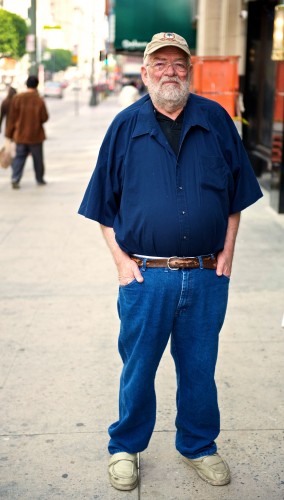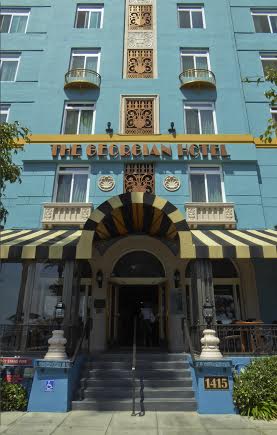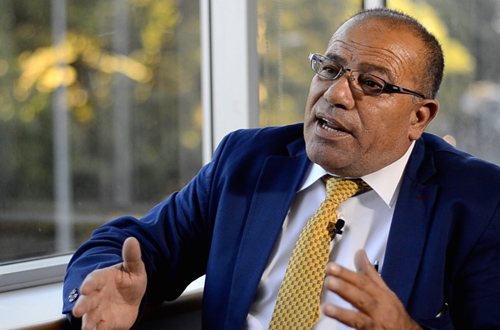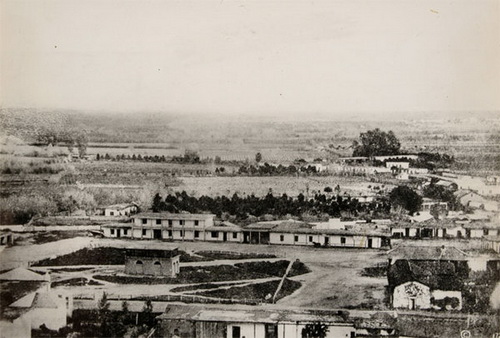We Are An Inferior & Superior Beast
Cousin Kron Menuhin, a rural kingpin, in his field in Australia;
Lionel Rolfe, Kron’s citified cousin, speaking from the streets. Photo by Gary Leonard
By LIONEL ROLFE
I know of someone who had almost nothing to recommend him. You wouldn’t really want me to write about this person, but I am doing it anyway. He was a very ugly and dreary man who lived in a rural section of Melbourne.
We had driven onto his strange old farm and were immediately met by big nasty dogs. Luckily we were in my cousin’s car. With an angry snarl, the man came forth. I was in a car driven by the man who had sold him his ranch house a while back and they were supposedly good friends. But when my driver, cousin Kron, got out of his car, one of the dogs came up and bit him. Not hard, but hard enough. Kron got back in the car.
The man’s effect on my mood was enormous and immediate. The doors to his house looked like they were the entrances to a shriveling but gigantic dirty shed. The man himself look like the appurtenances to his shed-house. I should also explain that the “shed” was actually a large building, but I doubt it had any living areas in it. At one point, I looked through a door leading to the kitchen. The kitchen though never looked like a kitchen. I suspect he used it to make dead rats into dinner—whatever he was cooking there, I had no desire to look further. I suspect the rats were seasoned with cockroaches. When my cousin Kron owned the house, I’m sure it was a lovely Australian abode—but it no longer was. Read more
Good night, Sweet Prince

Good night, Mark…. Mark took the picture of Mary in Big Sur in 1964, about five months before the marriage in Las Vegas. The picture of Mark was taken in Kobe, Japan in the 1990s.
By MARY REINHOLZ
The last time Mark Shechner and I exchanged emails, he accused me of having gone through “a string of men” after our mini–marriage broke up in Berkeley. That is true. But then single girls do date even after they get knocked up, married in a quickie wedding chapel and discarded like a wad of used tissue two years after an abortion as I was by Mark, my distinguished ex from long ago. He died unexpectedly last October at age 75.
He was not the only man to suggest that I was what used to be called a loose woman, somewhat like Marilyn Monroe to his Arthur Miller, a slutty and nutty blonde babe who had wed a serious man of letters. (“Mary has her lucid moments,” he would say in his patronizing manner after we had a blowup.)
A few factoids: Mark and I tied the knot while he was a lowly graduate student at UC Berkeley, working on his doctoral dissertation, a psychoanalytical interpretation of James Joyce’s “Ulysses.” It became his first book, “Joyce in Nighttown.” As for our bizarre and brief 1964 marriage, he said in our electronic correspondence that it was part of a relationship “that was not built to last.”
“I saw you as the golden shiksa,” he wrote in one of his missives, trying to answer my question as to why he had proposed to me in Los Angeles at his father’s apartment.
. “There was more brass than gold,” he said of me, “but I didn’t know the difference back then.” And then: “Why did I marry you? I didn’t want to disappoint you. What did you expect?”
He acknowledged that our idyllic Big Sur vacation, where we made love under a beach blanket as people in bathing suits strolled by on the white sand, was one of the high points of his twenties and led to his popping The Question. He even sent photos he had taken of me in that West Coast paradise, some standing against a redwood tree. He had kept them all those years.
“Shock and awe, Mark,” I emailed him back repeating the words ascribed to George W. Bush’s carpet bombing campaign of Baghdad in 2003. “Shock and awe.” I was stunned by the pictures of the young girl I once was and saddened by what could have been had Mark and I stayed together. For starters, he had economic security. I did not. Read more
“The Georgian” On My Mind
By Bob Vickrey
I doubt if Ray Charles had The Georgian Hotel in Santa Monica on his mind when he recorded his classic hit song in 1960, but I found myself humming his famous tune as our monthly lunch group made its way through the canyon to our destination on Ocean Avenue.
When we began our lunch club venture last year, our intention was to visit some of the most famous Los Angeles restaurants, but somewhere along the way, legendary Southern California hotels became an integral part of our itinerary. We’ve visited the Polo Lounge at the Beverly Hills Hotel, the Bel-Air, the Chateau Marmont, and most recently, the Culver Hotel, which all occupy splendid chapters of Los Angeles history.
The Georgian opened its doors in 1931 when Santa Monica was a little-known beach community, and the colorful art deco hotel became a seaside getaway for Hollywood A-listers. It became one of L.A.’s first speakeasies during prohibition and hosted the famous and the infamous, such as Gable and Lombard, Fatty Arbuckle, and Bugsy Siegel, who enjoyed martinis and jazz on the hotel veranda. Read more
Palestinian Human Rights Activist Says Corruption and Failure to Invest in West Bank Economy Are Biggest Obstacles to a Palestinian State
Leslie Evans
“The Palestinian Authority has failed to lay the groundwork for a state,” Palestinian journalist and human rights activist Bassem Eid told a Los Angeles audience June 16. He was completing a national speaking tour that began last fall and included some 27 college campuses. “It is counterproductive for European countries to recognize a Palestinian state when the elements of such a state do not exist. Even if such proposals had legal weight, they would give us not a two state solution to the Israeli-Palestinian conflict, but a three state solution. In addition to Israel we would have Hamas’s Islamic emirate in Gaza and Mahmoud Abbas’s small empire in the West Bank. But in any case the economic infrastructure has not been created to sustain a state and the Palestinian leadership is deeply mired in corruption and undemocratic practices.”
Bassem Eid was born in East Jerusalem in 1958, when it was part of Jordan. He spent his first 33 years living in the Shuafat refugee camp. Today he lives in Jericho in the West Bank, “under the Palestinian Authority’s jurisdiction,” he points out. Read more
Honey Talks About Where Los Angeles Began, Part 1
NOTES FROM ABOVE GROUND
By Honey van Blossom
(Honey is a Belgian Marxist former strip-tease artiste)
Introduction
“128. When it began, Los Angeles had no riverfront, harbor, or highway to somewhere else more important. Before Colonel de Neve opened his notebook and drew a plan showing house lots around a plaza and the church, Los Angeles had no explanation.” D. J. Waldie, Holy Land: a Suburban Memoir (St. Martin’s Griffin`1996).
Waldie’s misunderstandings about the birthplace of Los Angeles are common among those that think about it at all. Neve did not open a notebook and draw a plan. Before the Spanish pueblo of Los Angeles was founded in 1781, no one needed somewhere else more important to go to because the idea of somewhere else more important would have been incomprehensible to anyone living in the region, except possibly the padres of the two missions, but the padres were dedicated to conversions of the native people to Catholicism.
Los Angeles began as far as we now know in a large native village that was near, perhaps partly under, where City Hall now stands and extended to today’s Fletcher Bowron Square.
Felipe de Neve was governor of the Californias when he organized the founding of the Pueblo de la Reina de Los Angeles in 1781, although it is true that he earned the rank of colonel in 1774.
José Darío Argüello (1753-1828) drew a map in 1786 of the pueblo as it was five years after its founding.. https://www.kcet.org/lost-la/the-first-map-of-los-angeles-may-be-older-than-you-think. (Retrieved 6/17/2016). This link takes you to the map translated into English. https://www.kcet.org/shows/lost-la/happy-birthday-los-angeles-but-is-the-story-of-the-citys-founding-a-myth. (Retrieved 6/17/2016) Under Neve’s orders, Argüello had led the first ten Los Angeles pobladores to the site of the pueblo that grew into Los Angeles in June 1781. Read more








